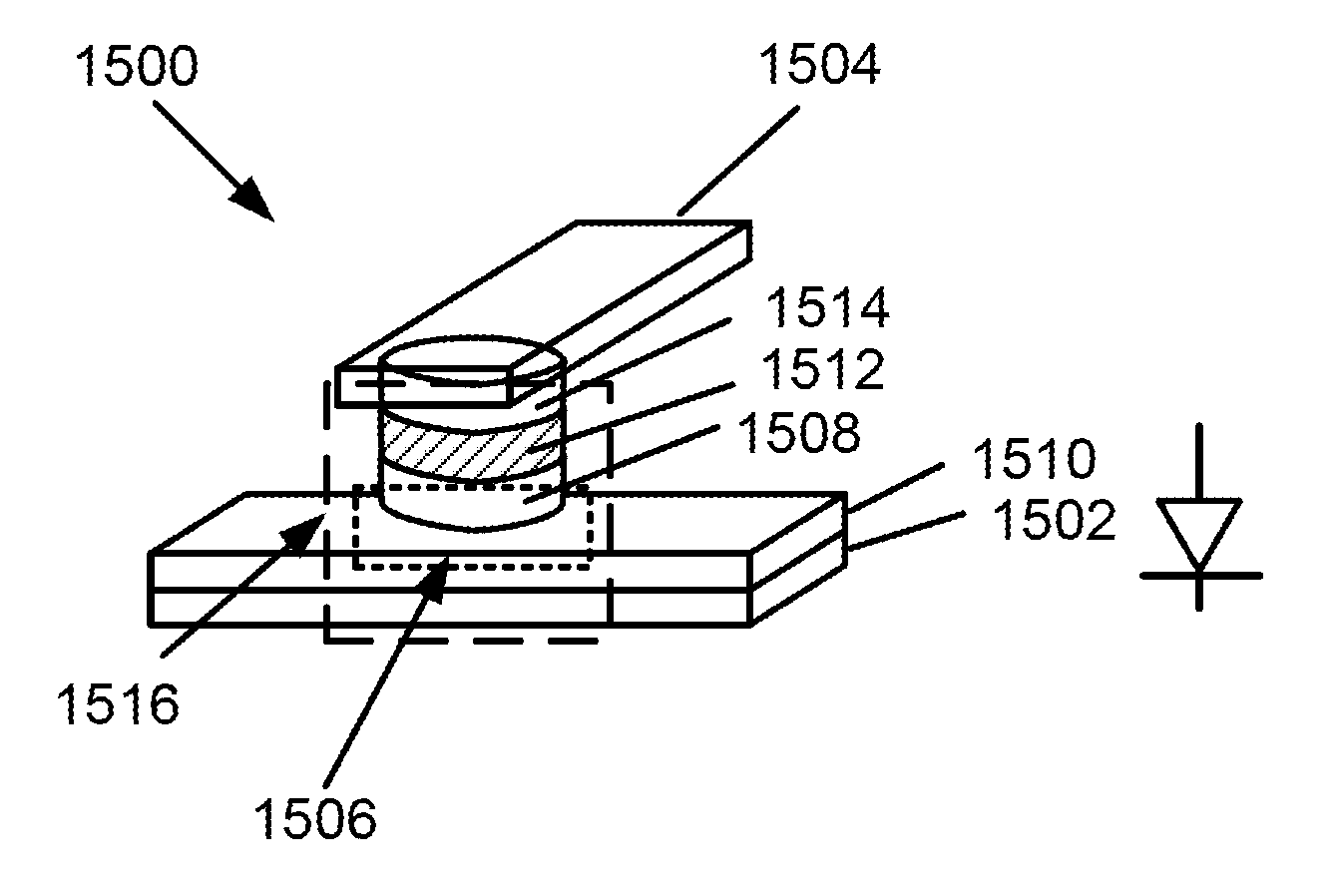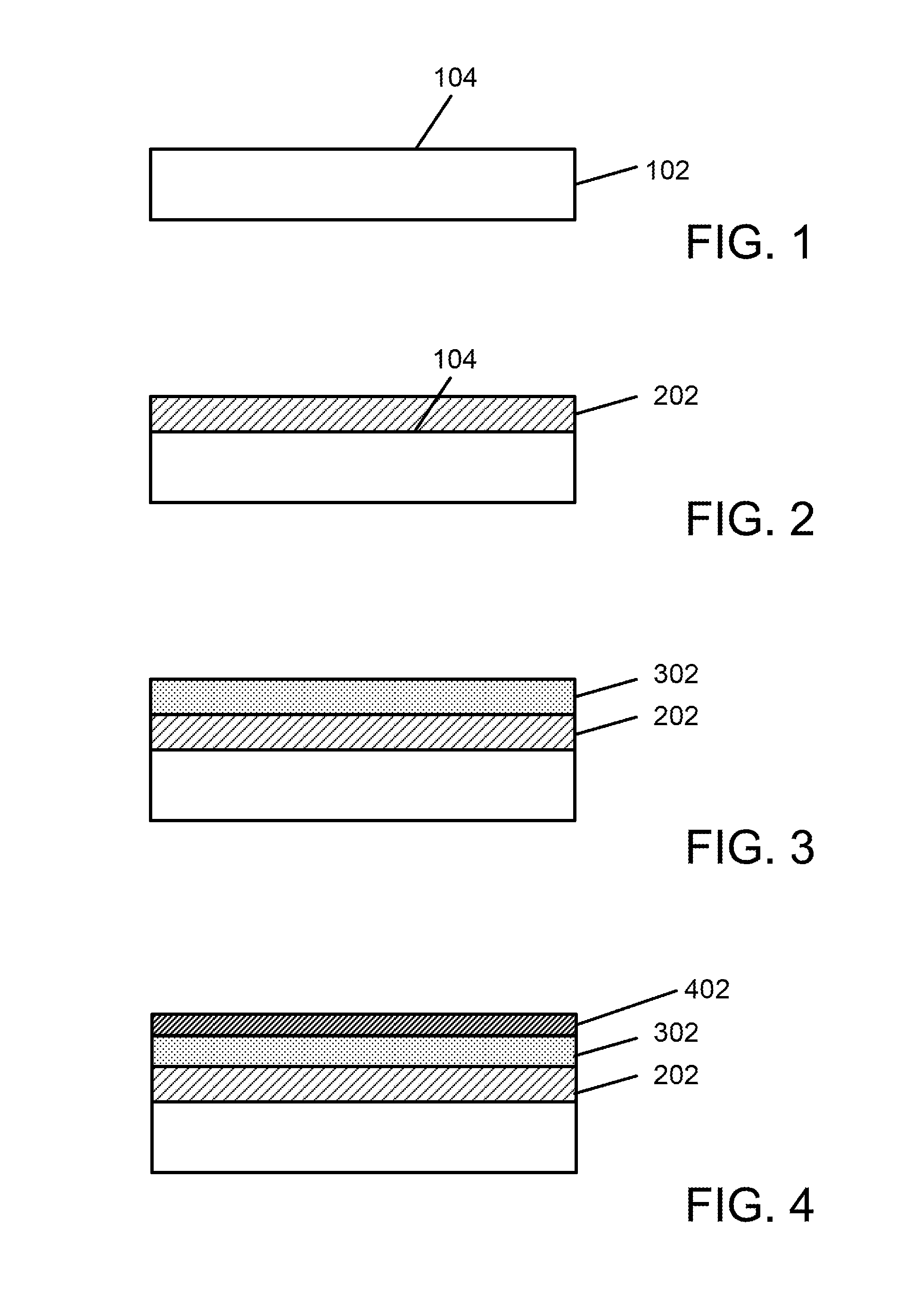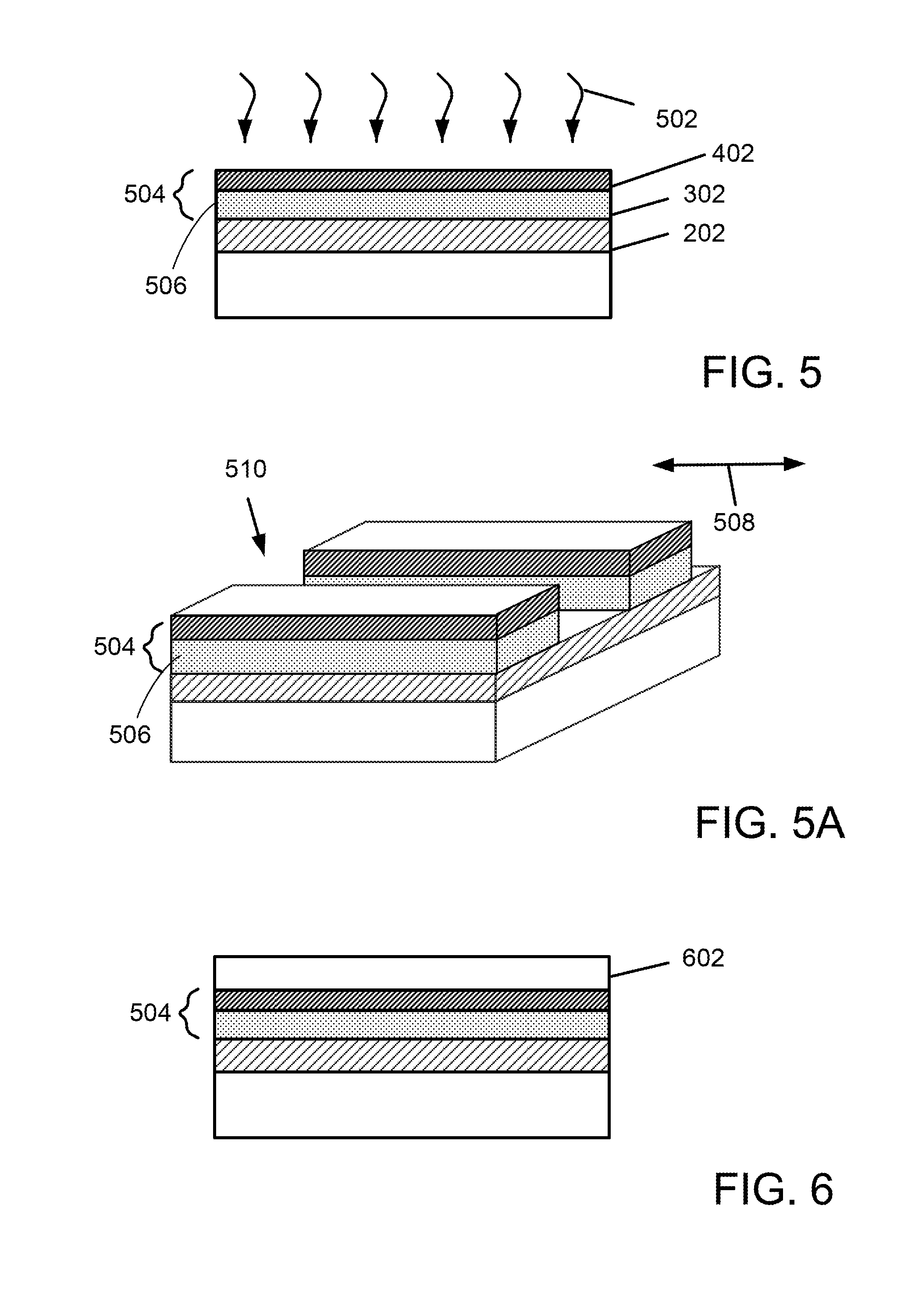Vertical Diodes for Non-Volatile Memory Device
a technology of non-volatile memory and diodes, which is applied in the direction of diodes, semiconductor devices, magnetic field-controlled resistors, etc., can solve the problems of increasing power dissipation, non-scaling of sub-threshold slopes, and reducing device performan
- Summary
- Abstract
- Description
- Claims
- Application Information
AI Technical Summary
Benefits of technology
Problems solved by technology
Method used
Image
Examples
Embodiment Construction
[0015]The present invention is generally related to steering elements. More particularly, embodiments according to the present invention provide a method and a device structure to form a rectifying element vertically integrated with a resistive switching device. The steering device can be fabricated at a process temperature less than about 450 Degrees Celsius. Embodiments according to the present invention can be applied to non-volatile memory devices, but it should be recognized that the present invention can have a much broader range of applicability.
[0016]High density and low cost storage devices are in ever increasing demand due to the growth in consumer devices common in the market place. Current non-volatile memory devices including Flash are probably at an end to further scaling due to fundamental limitations in the devices. It is predicted that current charge storage in a floating gate or a dielectric material in Flash devices may not be possible in device size less that abo...
PUM
 Login to View More
Login to View More Abstract
Description
Claims
Application Information
 Login to View More
Login to View More - R&D
- Intellectual Property
- Life Sciences
- Materials
- Tech Scout
- Unparalleled Data Quality
- Higher Quality Content
- 60% Fewer Hallucinations
Browse by: Latest US Patents, China's latest patents, Technical Efficacy Thesaurus, Application Domain, Technology Topic, Popular Technical Reports.
© 2025 PatSnap. All rights reserved.Legal|Privacy policy|Modern Slavery Act Transparency Statement|Sitemap|About US| Contact US: help@patsnap.com



